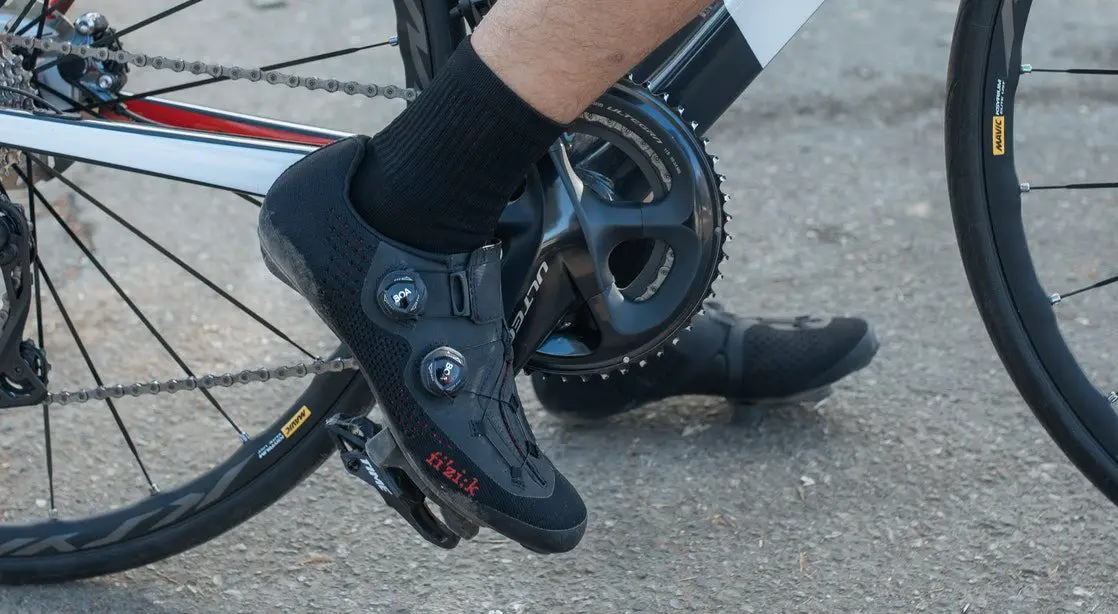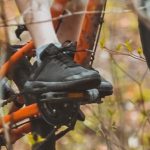When riding a mountain bike, having shoes that fit properly makes a big difference in comfort, efficiency, and safety. Well-fitted mountain bike shoes provide power transfer to the pedals, keep feet in place while pedaling, and protect feet from injury. This article covers what to look for when determining the right mountain bike shoe fit.
Foot Size and Shape
Having the correct shoe length and width for your foot size and shape is key. Feet swell slightly when riding, so mountain bike shoes should fit snugly without pinching. A thumb’s width between the toes and shoe end allows room for swelling. Consider foot shape too – some shoes better accommodate wide feet or high arches. Try on shoes after a ride when feet are expanded to best gauge fit.
Ill-fitting shoes lead to foot pain and lack of power transfer when pedaling. Extra room allows feet to slide inside shoes while pedaling, reducing efficiency. Excessively tight shoes pinch nerves and restrict blood flow, also decreasing power.
Mounting Cleat Position
The cleat mount position on the shoe bottom impacts comfort and pedaling dynamics. Cleats bolted too far forward or back increase strain on feet and knees.
Manufacturers guide ideal cleat mounting zones. When clipped in on pedals with the ball of the foot over the spindle, there should be a thumbs width between cleat tip and shoe tip. This centers pedal force through the foot for optimum comfort and power.
Heel Lift
Ideally, mountain bike shoes stabilize heels from lifting inside the shoe when pedaling. Heel lift interrupts power transfer by disengaging the foot from the pedal and causes rub spots or blisters.
Light heel lift when pedaling hard over rough terrain is normal. But frequent moderate lifting indicates shoes are too large. Re-tighten laces or straps to limit lift. Replace ill-fitting shoes contributing to excess heel lift.
Toe Box
The shoe toe box houses and protects the foot front. A roomy, rounded box allows toes to move naturally when climbing and absorbing trail impacts. Low, tapered toe boxes cramp toes together, causing pain on and off the bike.
While riding, slide feet forward so toes lightly touch the front without jamming. If toes bang or feel pinched, the toe box likely runs too short or narrow. Trying a wider or larger shoe prevents bruised or lost toenails and aggravation of foot bone spurs.
Outsole Tread Lug Depth
The outsole lug pattern and depth affect off-bike traction. Shallow, tightly spaced lugs shed mud well yet may slip on wet rocks or logs. Large, widely spaced lugs bite into soft or loose terrain but hold mud or clay.
Analyze trail conditions to determine adequate lug depth. Aggressive lugs in the 1/4 to 1/2 inch range work well for muddy, loose trails. Low 1/8 inch lugs suffice for hard-pack or groomed park tracks. Switch shoes for varying conditions or choose moderate tread for multi-surface versatility.
Deep, flexible lugs also improve control when hike-a-biking challenging sections. Look for grid or pod-style lugs under the toe ball for hiking grip. Slick-bottomed shoes make pushing or carrying bikes up slopes difficult.
Production Last Shape
Shoes bear the imprint shape from the production last mold giving them form. Last shape and proportions affect fit – some better match certain foot shapes. Length, mid-foot and toe box volume, instep height and other variables comprise last dimensions.
If a particular brand or model causes hot spots despite the correct size, trying a different last shape often remedies fit issues. Last designs vary across brands catering to various foot proportions. Shimano, Pearl Izumi and Bontrager use different proprietary lasts tuned to their target rider groups. Ask dealers what brands work for corresponding foot shapes to dial in your best fit.
Closure System
Mountain bike shoes employ various closure systems to dial in fit – Velcro straps, ratchets, laces and more. These allow customizing tension across the upper for security while accounting for foot swelling and warmth during rides.
Straps overlay the foot centerline, distributing pressure evenly when tightened. Simple strap systems make micro adjustments easy and get shoes on and off quicker. Durable ratchet or Boa wire setups offer more precision tensioning, important for performance racing fits.
Determine optimal closure tightness through trial and error when new shoes break-in. Check snugness and circulation intermittently during beginning rides. Find the custom tension keeping feet secure with no pinching or lost circulation for your chosen closure method.
Getting the proper mountain bike shoe fit makes time in the saddle more comfortable and efficient. Evaluate shoes based on adequate foot size match, ideal cleat placement, heel lift, toe box shape, outsole tread type, production last dimensions and preferred closure system. Striving for correct form-fitting shoes prevents injury while optimizing power transfer and control pedaling technical terrain. Test prospective shoes on trail rides mimicking race conditions to best confirm fit. Invest time up front selecting appropriate mountain bike shoes so your feet perform their best mile after mile.







